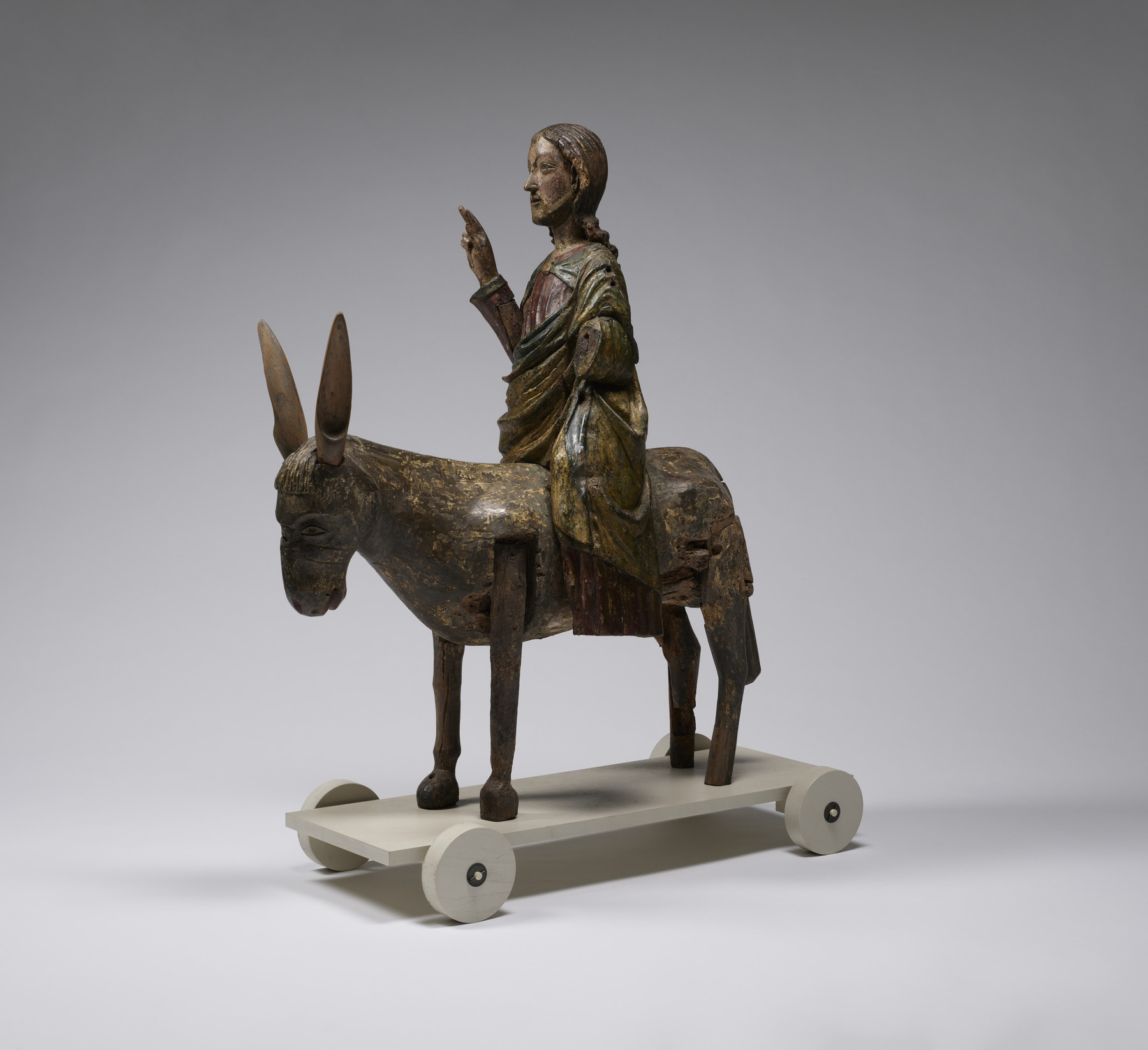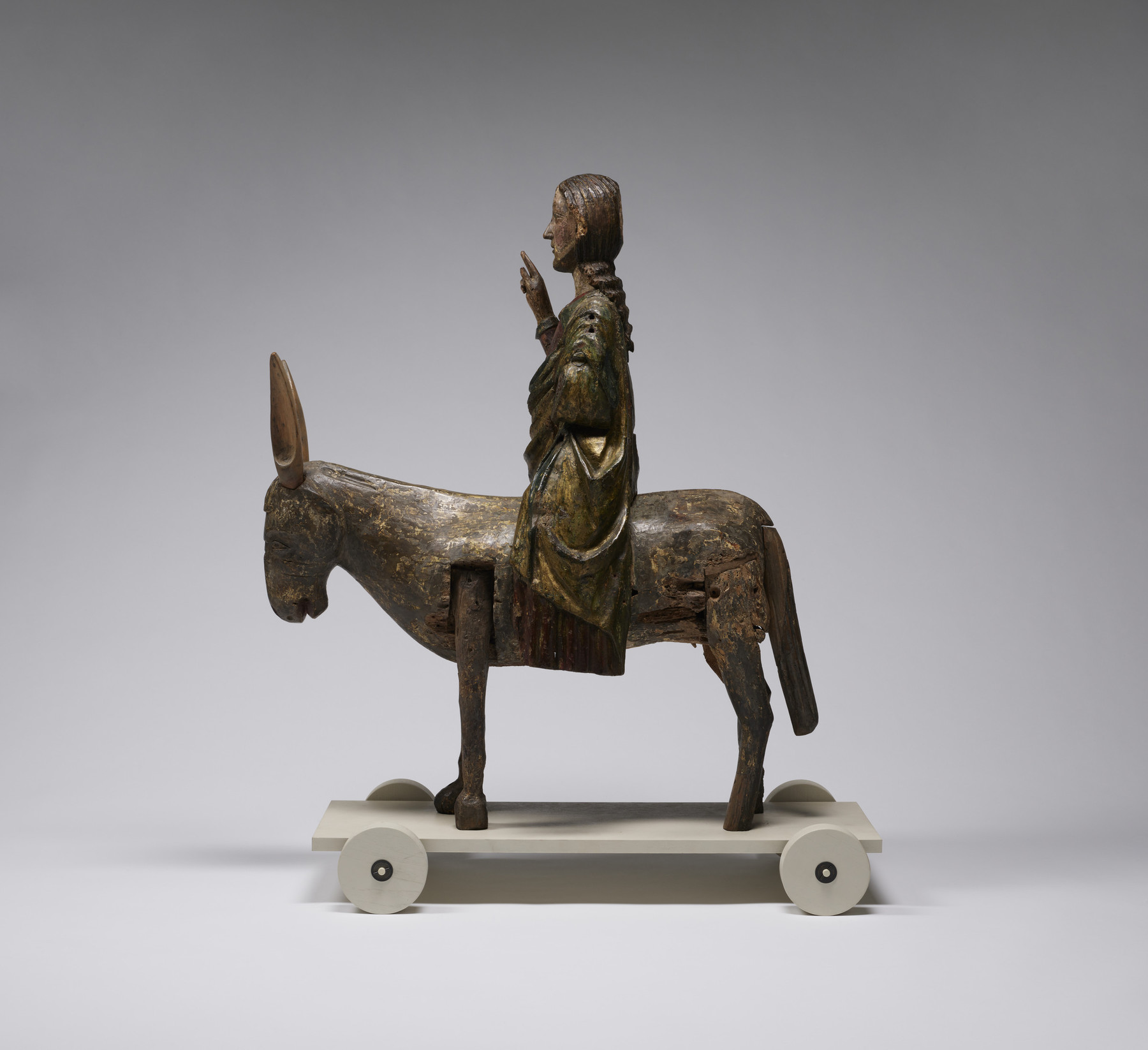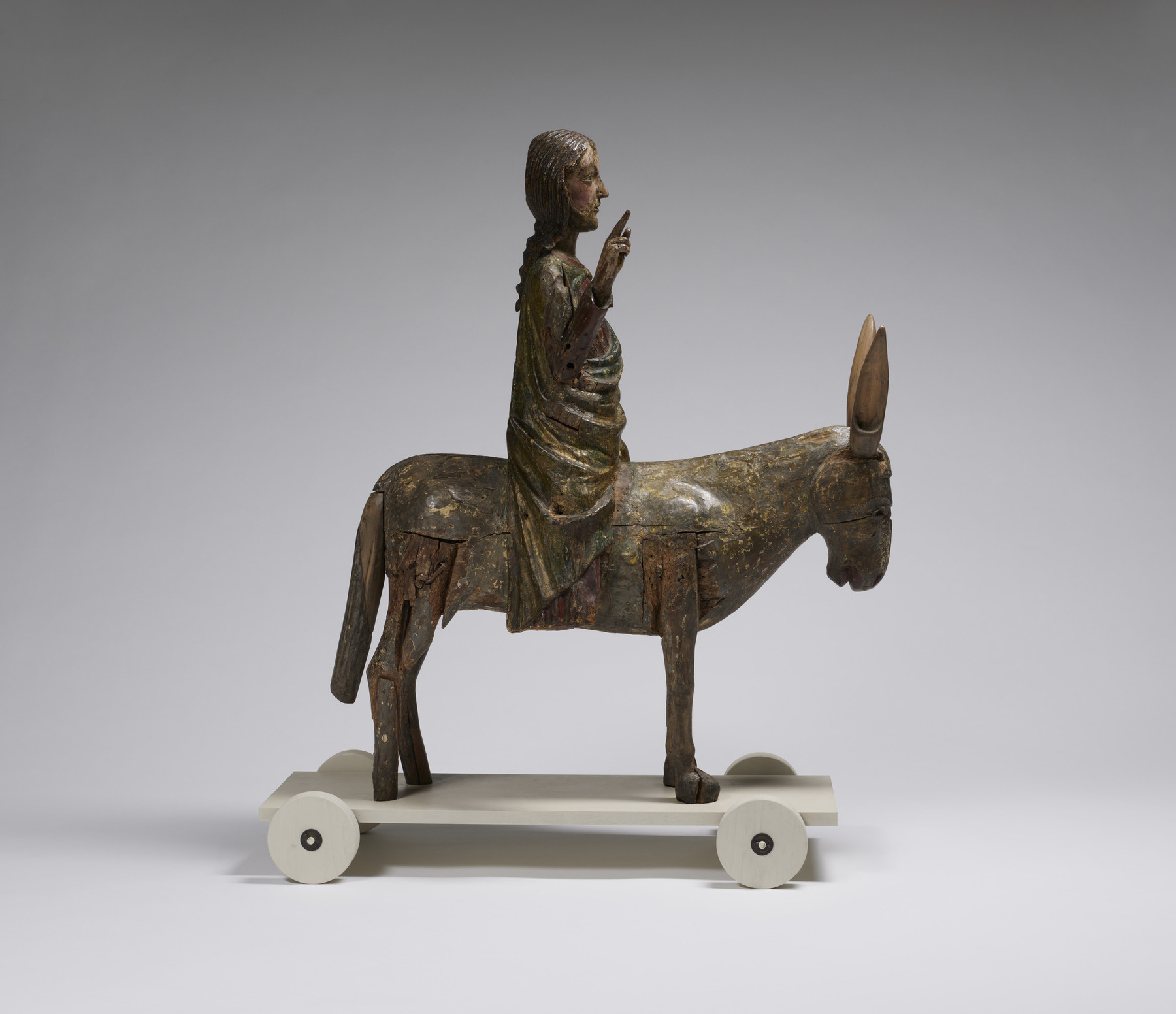Palmesel
(Medieval Europe )
This engaging sculpture depicts Christ riding a donkey during his triumphal entry into Jerusalem on the Sunday before his death on the cross. His elaborately draped robes are richly colored in red and blue polychromy, as well as gold leaf, lending him a regal air and suggesting the solid form of his body beneath. Christ’s face is beautifully and smoothly carved to convey his youth, while details such as his pronounced eyelids and brow ridges focus the viewer’s attention on his steady gaze in his acceptance of his impending death on the cross. The animal he rides is sensitively rendered and charming, with soft features and downcast eyes. Christ’s choice to ride the lowly donkey symbolizes his humanity and humility.
The Palmesel is a type of kinetic or movable sculpture. Common in Germanic countries from the 13th through the 16th century, a Palmesel was processed on Palm Sunday through the streets around a local church. This example experienced significant wear as it traveled rough roads and cobblestone streets, jostled and touched by the faithful along the way—losing its original cart, rear hooves, and ears over its centuries of use. A square cavity in Christ’s back, concealed by a wood cover, was probably used to hold a relic. This may be a later alteration to the piece, which demonstrates its continued use throughout the later Middle Ages and early Renaissance. The insertion of a holy relic into the sculpture would have sanctified it for its early users.
This Palmesel is one of the earliest that survives. Stylistically, and in terms of scale, the Palmesel may be dated to the second half of the fourteenth century. While examples from the fifteenth and sixteenth centuries are often close to life-size, earlier examples, such as this one, are approximately half life-size. It has been suggested that its smaller size would have facilitated its movement by children in a mountainous Alpine landscape and would have allowed for a more intimate relationship between the viewer and the sculpture. Unlike many museum objects from the Middle Ages, the Palmesel was accessible not just to the wealthy elite and the clergy but to all levels of society. It moved among the laypeople so that they could participate in an immersive experience of a significant event from Christ’s life in their own time and place.
Provenance
Provenance (from the French provenir, 'to come from/forth') is the chronology of the ownership, custody, or location of a historical object. Learn more about provenance at the Walters.
Klausener family, Burtscheid, Germany, prior to WWII; Herbert Lüttgens Collection, Germany, by 1951; sale, Lempertz Auctions, Cologne, Germany, May 12, 2012, lot 1367; purchased by Sam Fogg Ltd., London, 2012; purchased by Walters Art Museum, 2019.
Geographies
Germany, Franconia (Place of Origin)
Measurements
H: 37 13/16 × W: 13 3/8 × D: 32 5/16 in. (96 × 34 × 82 cm)
Credit Line
Museum purchase with funds provided by the Loretta Ver Valen Acquisition Fund, 2019
Location in Museum
Accession Number
In libraries, galleries, museums, and archives, an accession number is a unique identifier assigned to each object in the collection.
In libraries, galleries, museums, and archives, an accession number is a unique identifier assigned to each object in the collection.
61.361












